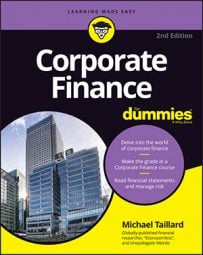People prefer to live their lives in a fantasy. They fear what they don’t understand and dream of what they (probably) can’t attain. You shouldn’t be surprised, then, to find out that this same view influences people’s financial decisions in a behavioral fluke described as the prospect theory, which basically says this:
When making financial decisions that aren’t certain (meaning that the outcomes aren’t certain but the probability of success can be estimated), people look at the potential for gain or loss instead of relying on rational thinking using the probable outcomes.
Consider health insurance as an example of this theory in action. Insurance companies have so much data available to them that they can determine with extreme accuracy what the probability is that you’ll get sick or hurt based on your ancestry, geographic location, job, lifestyle habits, and a number of other variables that they research about you when you apply for coverage.
As a result, insurance companies can also accurately estimate the amount they’ll have to pay every year in health benefits. They then charge a percentage over that amount to maintain profits. (In other words, you pay more for medical services every year than they’re actually worth in the amount equal to the overhead costs and profits of the entire health insurance industry.)
Why on Earth do people pay so much for health insurance when they would likely be better off just paying the hospital directly? Because people make decisions in the world of the improbable, thanks to the prospect theory. Insurance salesmen are trained to prey on this fact.
They tell you horror stories about what could happen to you and your family if you don’t have coverage. Although there’s a small probability that you will, in fact, receive more benefits from your coverage than you actually pay, that probability is very small, as proven by the fact that insurance companies increase in profitability nearly every year. Still, people focus on that small probability of the worst-case scenario, and then they act on it.
The prospect theory has two extremes:
At one extreme, you have the people who fear potential loss significantly more than they desire potential gain. These people have a difficult time investing at all for the fear that they may lose the money. These people purchase the maximum amount of every insurance they can buy and are definitely not investing in the stock market.
At the other end, you have the people who desire the potential gains far more than they fear the potential losses. These people take extreme risks in the hopes of earning a huge financial return. They’re often day traders, bank executives, or hopeless gambling addicts.
The people who make the most rational decisions attempt to objectively measure the potential gains and losses, weighted by probability. Many of them end up working as value investors or finance writers.

